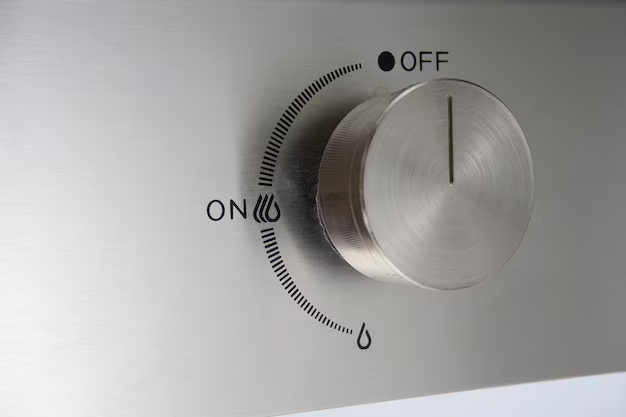What's the Ideal Refrigerator Size for Your Kitchen? 🌟
Choosing the right refrigerator is crucial for any kitchen, providing the perfect balance between functionality and space efficiency. 🏡 Refrigerators come in all shapes and sizes, but what is the average size you can expect? Let's delve into this subject to uncover how to select a refrigerator that best fits your lifestyle and space.
Understanding Refrigerator Dimensions
When it comes to purchasing a new refrigerator, understanding its dimensions is fundamental. Most refrigerators are measured in terms of height, width, and depth. This trifecta of measurements will determine not only how much space the appliance will occupy but also how it will blend with your existing kitchen layout.
Typical Dimensions
While sizes can vary greatly, here are some commonly observed dimensions across different types of refrigerators:
- Top-Freezer Refrigerators: These are often seen as classic in design. They typically measure around 28 to 32 inches in width, 61 to 66 inches in height, and 28 to 34 inches in depth.
- Bottom-Freezer Refrigerators: Slightly taller and often wider, they usually range from 29 to 33 inches in width, 67 to 70 inches in height, and 29 to 33 inches in depth.
- Side-by-Side Refrigerators: Recognizable by their vertical freezer and fridge sections, these models are commonly 32 to 39 inches wide, 65 to 71 inches tall, and 28 to 30 inches deep.
- French Door Refrigerators: Known for their elegance and practicality, these usually fall between 29 to 36 inches in width, 68 to 70 inches in height, and 29 to 34 inches in depth.
Interior Capacity Considerations
The interior capacity, usually measured in cubic feet, gives you an idea of how much storage space the appliance offers.
- Compact Refrigerators: These typically range from 3 to 12 cubic feet and are suitable for small kitchens or as secondary storage.
- Standard Refrigerators: Most standard models offer between 18 to 26 cubic feet of space.
- Large-Capacity Refrigerators: For those who require extra storage, some refrigerators boast over 30 cubic feet of space.
Tailoring Refrigerator Size to Your Needs
There's no one-size-fits-all answer when it comes to selecting the right refrigerator. It depends extensively on your personal requirements and kitchen layout.
Evaluate Your Cooking Habits 🍳
- Frequent Cookers: If you cook often and frequently host gatherings, a larger model with greater capacity or additional compartments may be more suitable.
- Takeout Enthusiasts: For those who don't cook as often, a smaller refrigerator may suffice and save space.
Kitchen Layout and Available Space 📐
Before heading to the store, take precise measurements of the space allocated for your refrigerator. Consider leaving extra room for ventilation at the back and sides. Plus, evaluate the door-swing path to ensure it will not obstruct anything.
Exploring Trends and Innovations
Modern consumers often gravitate toward refrigerators that not only fit their aesthetic and functional needs but also offer the latest in technological advancements. Let's take a look at some pertinent trends:
Smart Features 💡
Smart refrigerators are increasingly popular among tech-savvy homeowners. Features like built-in screens, internet connectivity, and cameras to check contents remotely can enhance convenience significantly.
Energy Efficiency 🌿
With growing environmental concerns, more consumers are opting for energy-efficient models that consume less power. Checking the Energy Star rating can guide you toward more sustainable choices. Lower electricity usage leads to cost savings and reduced environmental impact.
Sustainable Options♻️
Alongside energy efficiency, there is also interest in appliances crafted from sustainable materials or those designed with end-of-life recycling in mind. These choices reflect a commitment to reducing carbon footprints.
Practical Tips for Buying a Refrigerator 🛒
Measure First!
Before purchasing, always:
- Measure the height, width, and depth of the space where the refrigerator will sit.
- Add a few inches of clearance space around your fridge for ventilation. 🌬️
- Measure doorways and paths leading to your kitchen to avoid delivery difficulties.
Plan for the Future 🔮
As trends and personal needs evolve, your refrigerator choice can as well. Consider future needs like anticipated family size changes or evolving cooking habits.
Check the Warranty and Reliability
Always inquire about warranties and service plans. High-quality brands and models may come with extended warranties, ensuring long-term durability and customer satisfaction.
🤓 Summary of Key Points
Here's a quick recap of practical pointers to remember when choosing the perfect refrigerator for your home:
- Standard Dimensions: Top-Freezer: Width 28-32", Bottom-Freezer: Width 29-33", Side-by-Side: Width 32-39", French Door: Width 29-36".
- Capacity Considerations: Compact (3-12 cu ft), Standard (18-26 cu ft), Large (30+ cu ft).
- Smart Features: Incorporate modern conveniences like built-in screens or connectivity.
- Energy Efficiency: Look for Energy Star ratings to ensure sustainability.
- Measure and Prepare: Always measure your space and plan for sufficient ventilation.
- Future-Proofing: Anticipate future needs based on lifestyle changes.
Choosing a refrigerator is no small task, but with knowledge of dimensions, capacity needs, and trends, you are well-prepared. Optimizing your refrigerator's size and features based on practical insights will not only meet your present needs but also adapt to future changes. 🍽️
